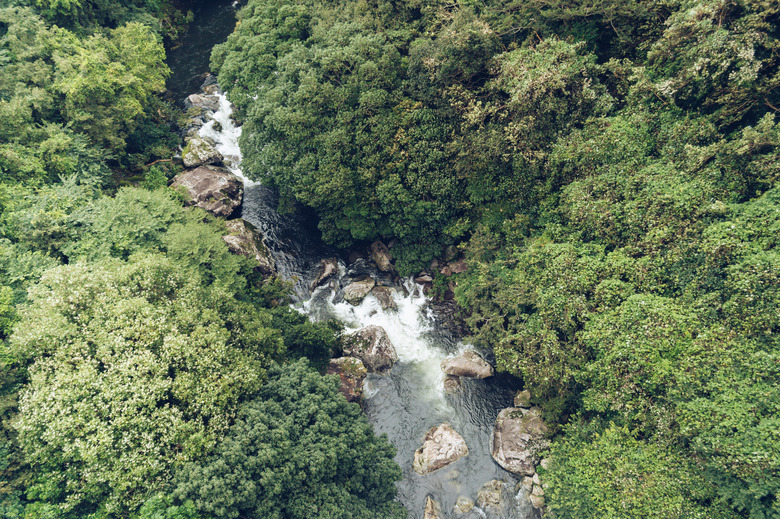What Are The Five Abiotic Features Found In The Aquatic Biome?
An abiotic feature is a nonliving component of the ecosystem that affects the way living things flourish. The aquatic biomes include the ocean, lakes, rivers, streams and ponds. Any body of water that harbors life is an aquatic biome. Aquatic biomes are host to many abiotic features, but are especially dependent upon five of those features.
Sunlight
Sunlight
Sunlight is vital for photosynthesis, which forms the basis for most food chains in aquatic biomes. In shallow water, the amount of sunlight available is largely dependent on changing factors, such as the season, cloud cover and local geography. In the deep water of the ocean and some lakes, however, sunlight only penetrates a fraction of the way to the bottom, leaving vast gulfs of water in complete darkness. Most of the ocean receives no sunlight at all. Life at these depths is largely dependent on sinking scraps from shallower ecosystems.
Temperature
Temperature
In small bodies of water, temperature may fluctuate greatly between day and night, and by season. Organisms must be prepared to deal with these fluctuations or die out. In large lakes and deep oceans, temperature is a function of depth. As sunlight diminishes with depth, so the water grows colder and the temperature less dependent on surface conditions. Deep in the ocean, the temperature falls to near freezing and remains incredibly stable. An exception is the tiny "islands" of superheated water provided by volcanic vents on the ocean floor, which evolve their own highly specialized ecosystems.
Chemical Composition
Chemical Composition
The two most important chemicals that are dissolved in water are oxygen and carbon dioxide. Oxygen is required to support animals and some forms of algae, while carbon dioxide is required to support plant life. If the balance between these two chemicals is thrown off, the result can be a mass die-off of plant or animal life. The chemical composition of water is also affected by local soil conditions and runoff from human activities. Slight increases in the levels of some chemicals can be extremely harmful to aquatic life.
Terrain
Terrain
Vastly different ecosystems have evolved to take advantage of underwater terrain. A slow river with a muddy bottom will harbor a completely different fish population than a stream flowing fast and clear over rocks. The ocean harbors diverse populations dependent on coral reefs, sandy shores, rocky island mounts or the expanse of the open ocean. Often, a species will depend on more than one terrain in its life cycle, although some are specialists who cannot survive outside a narrow range of terrains.
Water Disturbance
Water Disturbance
Water disturbance can take the form of waves, currents or the motion of rivers. The amount of disturbance a body of water undergoes determines the amount of oxygen and carbon dioxide that is dissolved from the atmosphere, the stratification of temperature from the surface to greater depths, and the effects of chemicals present in the water. A still lake will have narrower and a more rigidly defined set of temperature strata than a wave-beaten ocean, while the requirements of life in a fast-flowing river differ from both.
References
Cite This Article
MLA
Clay, Charles. "What Are The Five Abiotic Features Found In The Aquatic Biome?" sciencing.com, https://www.sciencing.com/five-features-found-aquatic-biome-8460182/. 22 November 2019.
APA
Clay, Charles. (2019, November 22). What Are The Five Abiotic Features Found In The Aquatic Biome?. sciencing.com. Retrieved from https://www.sciencing.com/five-features-found-aquatic-biome-8460182/
Chicago
Clay, Charles. What Are The Five Abiotic Features Found In The Aquatic Biome? last modified March 24, 2022. https://www.sciencing.com/five-features-found-aquatic-biome-8460182/
